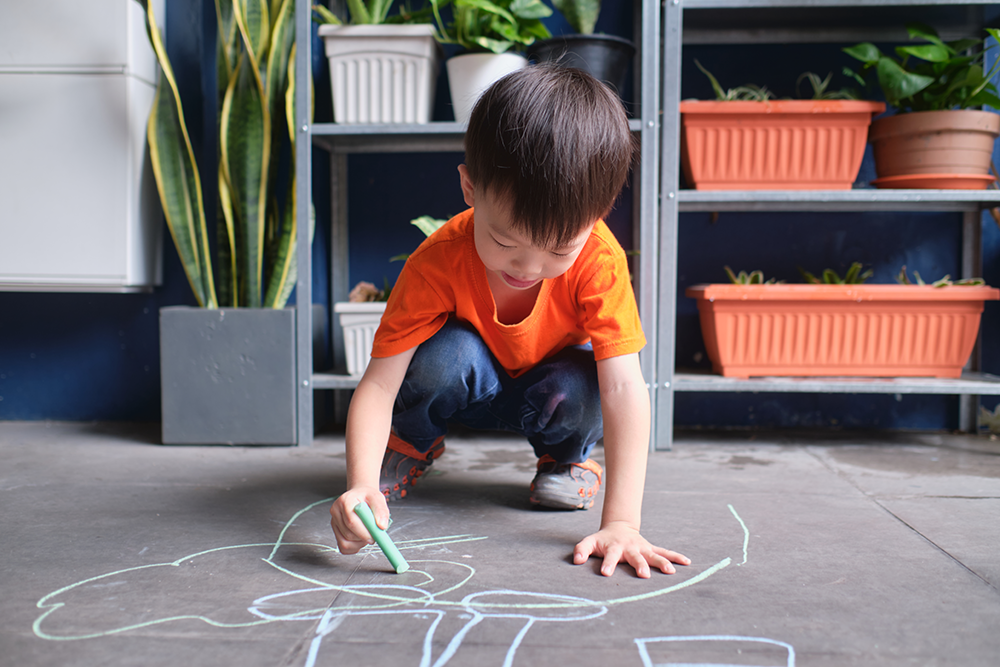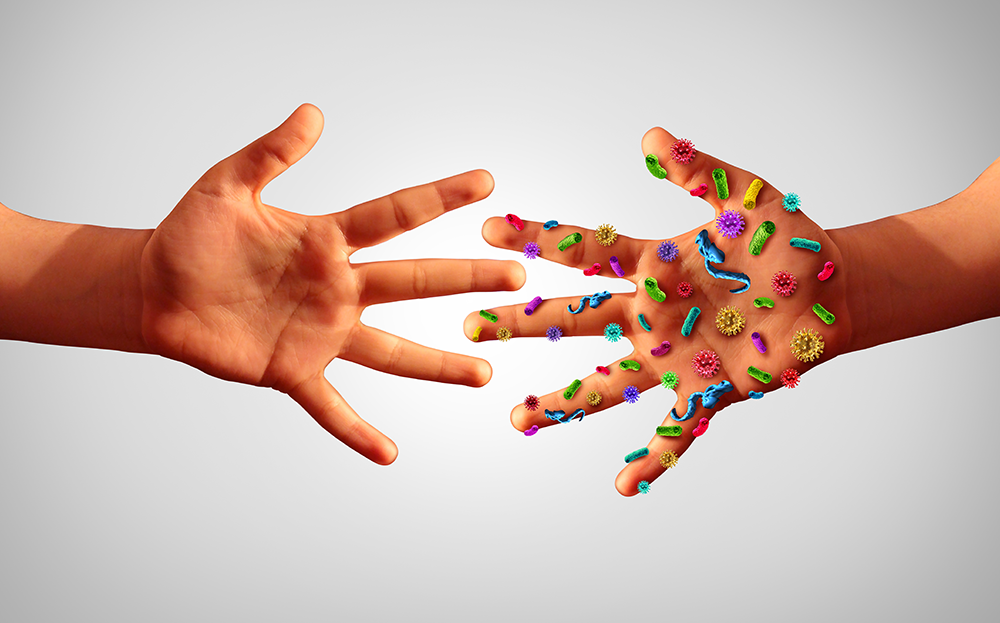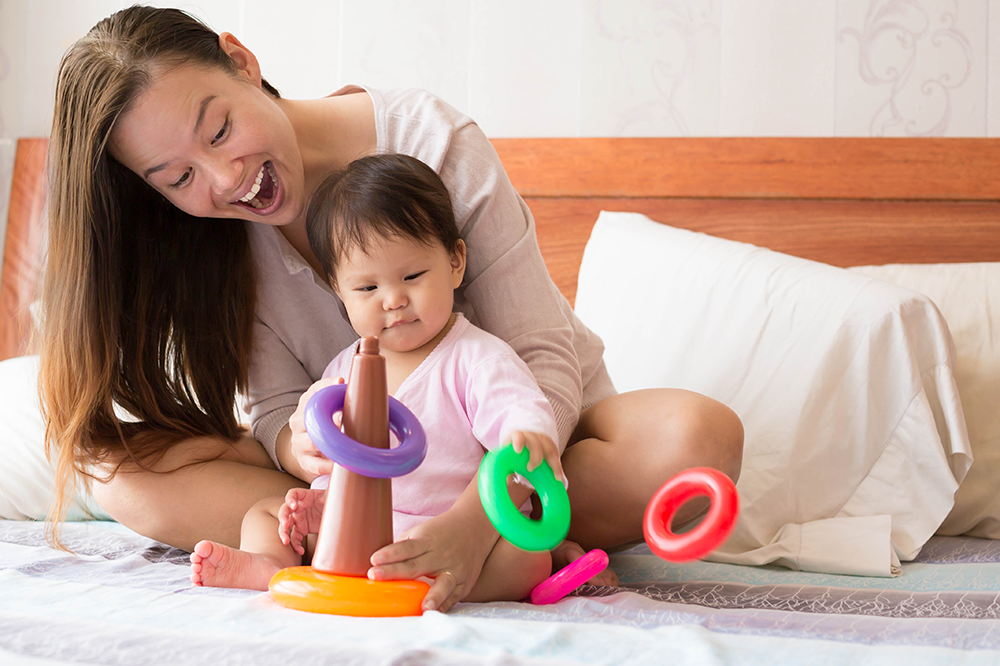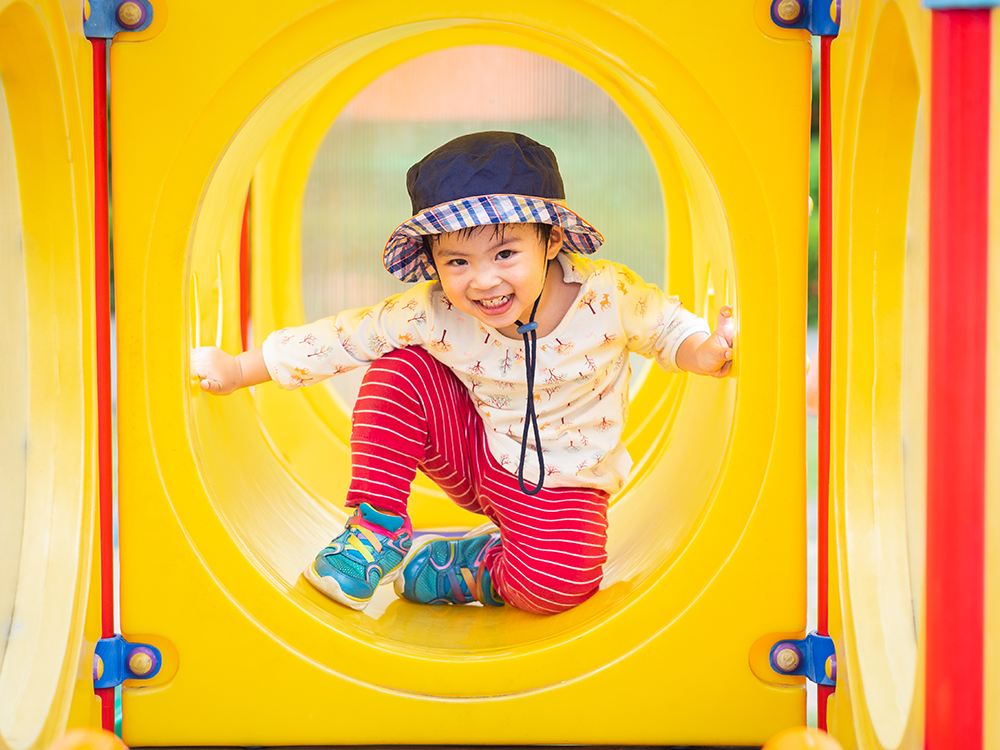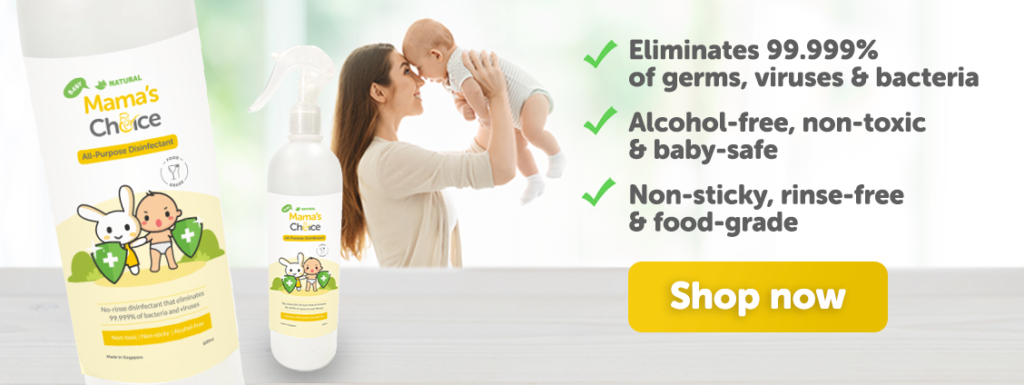Every mama has her way of raising, feeding, dressing, disciplining and even teaching her little one. However, there’s one thing that unites mamas around the world: no mama wants to see her child get sick because of germs, viruses and bacteria. Keep reading for our tips to protect your baby from germs.
Table of Contents
What are germs?
– Bacteria
– Viruses
– Fungi
– Protozoa
How to protect your baby from germs at home
– Clean and disinfect your home
– Sterilise newly bought baby stuff
– Handle food properly
– Teach good hygiene
How to protect your baby from germs outdoors
– Avoid crowded places
– Wash hands frequently
– Watch where you eat
– Follow your baby’s immunization schedule
Keep your home germ-free with this baby-safe disinfectant
Skip ahead to any section you find the most interesting!
Admit it, mama. This invisible enemy of ours has given us a permanent wrinkle with how much we worry about it day in and day out. This is especially true when you have a newborn, whose immunity is still building up and thus more susceptible to infections. It’s only right to be paranoid, especially now, where the COVID-19 pandemic is still wreaking havoc around the world.
But the truth is, we cannot completely protect our little ones from germs. Some exposure to germs is vital to strengthening their immune system, as a matter of fact. That, however, does not mean you should intentionally expose them to it. It’s one thing for babies to put stuff in their mouths (it’s part of growing up, really) and another to allow them to be cuddled by a sick family member.
Although babies are bound to catch a bug or two eventually, it’s still important to make an effort in protecting our babies from germs. The first three months of life, in particular, is when you should be extra cautious. This is because infants’ immune system doesn’t mature until around 4 months.
But First, What Are Germs?
Germs are tiny organisms that exist everywhere and can causes diseases. You can find them in the air, soil, water, food, plants and animals but only when you look at them through a microscope. Invisible to the human eye, they can enter the body through the mouth, nose, cuts in the skin, eyes and even the privates. Bacteria, viruses, fungi and protozoa are the four types of germs. Read on to find out how each germ differs from one another:
- Bacteria are single-celled organisms that are found in and outside of the human body. In fact, the National Human Genome Research Institute states that the human body is estimated “to contain more bacterial cells than human cells.” It should be noted though that most bacteria are harmless and only less than a hundred bacteria species cause diseases.
- Viruses are genetic material (DNA or RNA) that are smaller than bacteria. They rely on a host to reproduce, which means once it finds its way into the body, it spreads easily and can cause infections like the common cold or flu. Unlike bacterias, they cannot be killed by antibiotics.
- Fungi are plant-like organisms that thrive in damp environments. Fungi infections include athlete’s foot and yeast infections, which are generally not dangerous in an otherwise healthy person. Those with weakened immune systems may have several fungal infections, though.
- Protozoa are single-celled organisms like bacteria albeit bigger. They can cause diseases not just in humans but plants, animals and marine life as well. In humans, they mainly spread through contaminated water, causing amebiasis, malaria and other intestinal diseases.
How To Protect Your Baby At Home
Babies may be generally safer at home but that doesn’t mean there are no disease-causing germs lurking on doorknobs and toilet seats. These simple precautions can go a long way to keeping your home germ-free and your baby healthy.
Clean and Disinfect the House
When you’re busy chasing around a toddler or breastfeeding your infant, doing the chores is probably the last thing on your mind. However, floors and surfaces must be cleaned and disinfected as frequently as possible. Why? It’s because some bacteria divide every 20 minutes according to the Society for General Microbiology. Letting all that bacteria pile up is never a good idea, mama.
Also, bacteria and viruses don’t just spread from person to person but from person to surface. Viruses that cause cold can stay on indoor surfaces for up to seven days, especially if they’re on nonporous surfaces such as plastic or stainless.
If your baby is crawling or already walking, make sure to clean high-traffic areas and high-touch surfaces with soap and water first. And then, you can go ahead and use a disinfectant to eliminate germs. Where to focus your cleaning efforts? These are some of the dirtiest and germiest parts of your home:
- Kitchen countertops
- Appliance handles
- Doorknobs
- Light switches
- Drains
- Toilet floor
- Changing table
- Carpets
Sterilise Newly Bought Bottles, Nipples or Utensils
For brand new baby items, always sterilise them first. According to the CDC, It’s a particularly important step for feeding items because of the risk of contamination. You can use a steriliser machine, a dishwasher or a basin filled with warm soapy water. Just make sure you read the label of each product for specific cleaning or sterilising instructions before doing so.
Handle Food Properly
When one thinks about germs, floors and surfaces are usually the first things to come to mind. But food that isn’t handled safely can harbour germs that can cause vomiting and diarrhoea, too. The American Academy of Pediatrics and FoodSafety.gov recommend the following food safety tips to protect your baby from germs.
- Wash your hands before preparing your baby’s food
- Cook food all the way through
- Wash utensils and surfaces after preparing food, especially raw meats
- Separate raw foods from cooked foods
- Wash raw vegetables and fruits thoroughly before eating
- Store leftovers properly and immediately to prevent germ growth
Teach Good Hygiene
From teaching the importance of handwashing to showing how to properly cough and sneezes into a tissue (and disposing of it), it also helps to be proactive when it comes to germ prevention. These are good habits that will not only benefit them well into adulthood but your whole community as well.
How To Protect Your Baby Outdoors
Try as you may, you can’t keep your baby in the safety and comfort of your home forever. Instead of cringing at the fact that parks, malls and playgrounds are riddled with germs, arm yourself with practical knowledge that’ll help you keep your baby safe from viruses and bacteria instead.
Avoid Crowded Places
Another tip to protect your baby from germs is appropriate when you’re going out with a baby. It’s never a good idea to expose them to large crowds. If your baby is still young, you’re better off sticking to parks where there is little to no risk of catching droplets when someone sneezes or coughs.
It’s also a good idea to sanitise high-touch areas such as chair and tables when eating out. And if a stranger finds your baby adorable, don’t be afraid to politely distance your baby or keep them from touching your baby.
Wash Hands Frequently
Did you know that diarrhoea and pneumonia are the top two killers of young children under the age of 5 around the world? Both of which can potentially be prevented by handwashing alone.
The CDC reports that keeping our hands clean is one of the best ways we can protect ourselves from getting sick and spreading germs. As such, it’s extremely important to instil this habit in your little one as early as possible. When outdoors, soap and water may not be readily available. That’s why it’s a good idea to keep a sanitiser handy to remove germs. For children, alcohol-free hand sanitisers are the best option.
Watch Where You Eat Out
If you’re eating out, it’s a good idea to use disinfectant wipes on high chairs and tables before you put down your baby. As an extra precaution, you should also bring a disposable or reusable placemat and utensils for your baby.
Keep Your Baby Updated on Immunizations
Besides the above tips to protect your baby from germs, one of the most important things to do is to ensure you follow the recommended vaccine schedule for your baby. Babies can fight most germs, but some diseases are too much for their immune systems to manage. By keeping them up to date on their immunizations, you can prevent them from getting deadly diseases in the first place.
Keep Your Home Germ-Free with Mama’s Choice All-Purpose Disinfectant
Germs will always be a part of our lives. The only thing we can do is to protect ourselves and our little ones by following the tips we’ve shared above and through products that eliminate them.
Inspired by our immune system, Mama’s Choice All-Purpose Disinfectant eliminates 99.99% of disease-causing bacteria and viruses. What makes this special is that it does so without the need for harmful chemicals, fumes or residues. Only two ingredients make up this all-purpose disinfectant—pure electrolyzed water and edible salts.
How does it work exactly? You see, Mama’s Choice All-Purpose Disinfectant takes inspiration from Hypochlorous Acid (HOCI). It’s produced by our white blood cells as our immune system’s response to fight infection.
Our disinfectant is created using a proprietary process using electrolyzed water and edible salts, yielding a high purity HOCI solution that’s proven effective in killing germs, bacteria and viruses. Because HOCI naturally occurs within our white blood cells, it doesn’t sting or irritate the skin. It’s also one of the reasons it’s called “nature’s germ killer.”
There are no chemical additives to preserve the product’s stability so you can cast your worries aside, mama.
Is it safe for babies? Absolutely! It’s non-toxic, alcohol-free and food-grade. That means it can be used on your child’s hands, toys, utensils and other surfaces without needing to rinse it. It can even be used on minor cuts and wounds. There’s no need to worry about its safety, too, because it’s lab-tested and certified right here in Singapore.
Change the way you disinfect today with Mama’s Choice All-Purpose Disinfectant!
Mama's Choice Team
A team of passionate writers, young mamas, and creative superheroes who help mamas face motherhood one educational article at a time!

